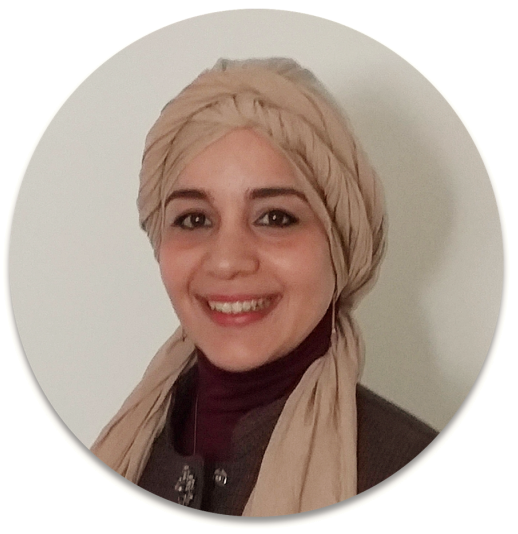Description & Relevance
Context
Big and complex data is fuelling diverse research directions in both medical image analysis and computer vision research fields. These can be divided into two main categories: (1) analytical methods, and (2) predictive methods. While analytical methods aim to efficiently analyse, represent and interpret data (static or longitudinal), predictive methods leverage the data currently available to predict observations at later time-points (i.e., forecasting the future) or predicting observations at earlier time-points (i.e., predicting the past for missing data completion). For instance, a method which only focuses on classifying patients with mild cognitive impairment (MCI) and patients with Alzheimer’s disease (AD) is an analytical method, while a method which predicts if a subject diagnosed with MCI will remain stable or convert to AD over time is a predictive method. Similar examples can be established for various neurodegenerative or neuropsychiatric disorders, degenerative arthritis or in cancer studies, in which the disease/disorder develops over time.
Why predictive intelligence?
It would constitute a stunning progress in the MICCAI research community if, in a few years, we contribute to engineering a ‘predictive intelligence’ which can map both low-dimensional and high-dimensional medical data onto the future with high precision. This workshop is the first endeavor to drive the field of ‘high-precision predictive medicine’, where late medical observations are predicted with high precision, while providing explanation via machine and deep learning, and statistically, mathematically- or physically-based models of healthy, disordered development and ageing. Despite the terrific progress that analytical methods have made in the last twenty years in medical image segmentation, registration or other related applications, efficient predictive intelligent models/methods are somewhat lagging behind. As such predictive intelligence develops and improves —and this is likely to do so exponentially in the coming years— this will have far-reaching consequences for the development of new treatment procedures and novel technologies. These predictive models will begin to shed light on one of the most complex healthcare and medical challenges we have ever encountered, and, in doing so, change our basic understanding of who we are.
What kind of research problems we aim to solve?
The main aim of PRIME-MICCAI is to propel the advent of predictive models in a broad sense, with application to medical data. Particularly, the workshop will admit 8-page papers describing new cutting-edge predictive models and methods that solve challenging problems in the medical field. We hope that PRIME workshop becomes a nest for high-precision predictive medicine, one that is set to transform multiple fields of healthcare technologies in unprecedented ways.
Topics of interests include but are not limited to predictive methods dedicated to the following topics:
- Modeling and predicting disease development or evolution from a limited number of observations;
- Computer-aided prognostic methods (e.g., for brain diseases, prostate cancer, cervical cancer, dementia, acute disease, neurodevelopmental disorders);
- Forecasting disease/cancer progression over time;
- Predicting low-dimensional data (e.g., behavioral scores, clinical outcome, age, gender);
- Predicting the evolution or development of high-dimensional data (e.g., shapes, graphs, images, patches, abstract features, learned features);
- Predicting high-resolution data from low-resolution data;
- Prediction methods using 2D, 2D+t, 3D, 3D+t, ND and ND+t data;
- Predicting image modality from a different modality (e.g., data synthesis);
- Predicting lesion evolution;
- Predicting missing data (e.g., data imputation or data completion problems).
- Predicting clinical outcome from medical data (genomic, imaging data, etc).
In-brief
This workshop will mediate ideas from both machine learning and mathematical/statistical/physical modeling research directions in the hope to provide a deeper understanding of the foundations of predictive intelligence developed for medicine, as well as to where we currently stand and what we aspire to achieve through this field. PRIME-MICCAI 2019 will feature a single-track workshop with keynote speakers with deep expertise in high-precision predictive medicine using machine learning and other modeling approaches —which are believed to stand at opposing directions. Our workshop will also include technical paper presentations, poster sessions, and demonstrations. Eventually, this will help steer a wide spectrum of MICCAI publications from being ‘only analytical’ to being ‘jointly analytical and predictive’.
Organizers
Keynote Speakers
Short bio: Professor Daniel Rueckert is Head of the Department of Computing at Imperial College London. He joined the Department of Computing as a lecturer in 1999 and became senior lecturer in 2003. Since 2005 he is Professor of Visual Information Processing. He has founded and leads the Biomedical Image Analysis group consisting of three academics, 15 post-docs and 20 PhD students. He received a Diploma in Computer Science (equiv. to M.Sc.) from the Technical University Berlin and a Ph.D. in Computer Science from Imperial College London. During his doctoral and post-doctoral research he has published more than 500 journal and conference articles as well as graduated over 45 PhD students. Professor Rueckert is an associate editor of IEEE Transactions on Medical Imaging, a member of the editorial board of Medical Image Analysis, Image & Vision Computing, MICCAI/Elsevier Book Series, and a referee for a number of international medical imaging journals and conferences. He has served as a member of organising and programme committees at numerous conferences, e.g. he has been General Co-chair of MMBIA 2006 and FIMH 2013 as well as Programme Co-Chair of MICCAI 2009, ISBI 2012 and WBIR 2012. In 2014, he has been elected as a Fellow of the MICCAI society and in 2015 he was elected as a Fellow of the Royal Academy of Engineering and as fellow of the IEEE.
Short bio: Dr. Le Lu is the director of Bethesda Research Lab of PAII Inc., the US research arm by one of the world's largest insurance companies. He founded the deep learning for medical imaging and clinical informatics group at NVIDIA in 2017 and was a senior research manager until June 2018. Before that, he was a staff scientist at National Institutes of Health Clinical Center, Bethesda, Maryland during 2013-17. He worked on various core R&D problems with critical technical contributions for Siemens colonic polyp and lung nodule CADx systems, vessel, and bone imaging at Siemens Corporate Research and Siemens Healthcare during 2006-2013. He has co-authored 130 peer-reviewed papers, invented 26 granted and pending US/WO/PCT patents and 37 inventions. He helped his trainees win two research trainee awards at RSNA 2016/2018, the young scientist "runner-up" award at MICCAI 2017 and the young researcher "test of time" publication award at MICCAI 2018, NSF/NDSEG/NSERC fellowships. He won the NIH Mentor of the Year award in 2015 and NIH Clinical Center Director's award for "research excellence and significant patient care impacts" in 2017. He serves the Area chair for MICCAI 2018, 2016, 2015, CVPR 2019, 2017, ICIP 2017; Demo chair of CVPR 2017; Industrial Track Chair for IEEE ICHI 2019; and won two outstanding reviewer awards at CVPR 2018, BMVC 2017.
Short bio: Jong Chul Ye is a KAIST endowed chair professor and professor of the Dept. of Bio/Brain Engineering and adjunct professor at Dept. of Mathematical Sciences of KAIST, Korea. Before joining KAIST, he worked at Philips Research, and GE Global Research, both in New York. He has served as an Associate Editor of IEEE Trans. on Image Processing, an Editorial Board member for Magnetic Resonance in Medicine, and an International Advisory Board Member for Physics in Medicine and Biology. He is currently a senior editor for IEEE Signal Processing Magazine, an associate editor for IEEE Trans. on Medical Imaging, and a section editor for BMC Biomedical Engineering. He is currently a General Co-Chair for 2020 IEEE Sym. on Biomedical Imaging (ISBI). His current research interests include machine learning and compressed sensing for various computational imaging problems for biology and medicine. His group was first place winner of the 2009 Recon Challenge at the ISMRM workshop with k-t FOCUSS algorithm, and the second winners at 2016 Low Dose CT Grand Challenge organized by the American Association of Physicists in Medicine (AAPM) with the world’s first deep learning algorithm for low-dose CT. His group has pioneered the development of new deep learning algorithms and mathematical theory for biomedical image reconstruction problems.
Program Committee Members
Amir Alansary, Imperial College London, UK
Changqing Zhang, Tianjin University, China
Dong Nie, University of North Carolina (UNC), USA
Gang Li, University of North Carolina (UNC), USA
Duygu Sarikaya, Univ-Rennes1, France
Gerard Sanroma, Pompeu Fabra University, Spain
Guorong Wu, University of North Carolina (UNC), USA
Heung-Il Suk , Korea University, Korea
Ilwoo Lyu, Vanderbilt University, USA
Ipek Oguz, Vanderbilt University, USA
Jaeil Kim, Kyungpook National University (KNU), Korea
Le Lu, NVidia Corp, USA
Lichi Zhang, Shanghai Jiao Tong University, China
María Valdés Hernández, University of Edinburgh, UK
Minjeong Kim, University of North Carolina at Greensboro, USA
Nesrine Bnouni, National Engineering School of Sousse (ENISo), Tunisia
Pew-Thian Yap, University of North Carolina (UNC), USA
Qingyu Zhao, Stanford University, USA
Seyed Mostafa Kia, Donders Institute, Netherlands
Stefanie Demirci, Technische Universität München (TUM), Germany
Sophia Bano, University College London, UK
Ulas Bagci, University of Central Florida (UCF), USA
Xiaohuan Cao, United Imaging Intelligence, China
Yu Zhang, Stanford University, USA
Yue Gao, Tsinghua University, China
Ziga Spiclin, University of Ljubljana, Slovenia
Submission
Papers are limited to eight pages, and formatted in Springer LNCS style. PRIME reviewing is double-blind.
For paper submission, please use the following link: https://cmt3.research.microsoft.com/PRIME2019
To download PRIME flyer, click here.
Key dates:
Full Paper Deadline: July 27, 2019; 11:59 PM PST (extended)
Notification of Acceptance: Aug 12, 2019 (Early bird registration deadline is on August 26, 2019)
Camera-ready Version: Aug 20, 2019, 11:59 PM PST
Workshop date: Oct 13, 2019
Submission instructions:
Papers should be submitted electronically following the guidelines for authors and LaTeX and MS Word templates available at Lecture Notes in Computer Science, double blind review). Manuscripts should be up to 12 pages and submitted via the PRIME submission website. No modifications to the templates are permitted. Failure to abide by the formatting guidelines will result in immediate rejection of the paper. The papers will be evaluated by three external reviewers or potential inclusion in the scientific program of PRIME-MICCAI.
SPECIAL PRIME 2019: Talented minority scholarship to register accepted PRIME papers by students in low research and development countries
– We offer support scholarships funded by BASIRA lab to register accepted papers if the first author is a student at a University in a low R&D country.
If the rank of your country is greater or equal to 50 (>= 50), then you are eligible. For more information, please check the following link:
https://en.wikipedia.org/wiki/List_of_countries_by_research_and_development_spending
Instructions for submitting your camera-ready paper:
Please make sure to upload a zip file including the following documents:
1. The final camera-ready PDF of your paper.
2. All original files required to generate the final PDF. If you are using Latex, please make sure to include .tex, .bib, figures, and any other files for compiling the tex file. If you are using Word, please upload the docx file.
3. Please fill out the Springer copyright form which can be found using this link: https://basira-lab.com/prime-lncs-springer_copyright_form-2019/
Please make sure that the copyright forms have been filled out correctly before uploading the zip file.
The paper length can vary between 8 and 12 pages.
Finally, please upload only one zip (not rar) file with everything included (using your paper submission ID, for example: PRIME19-32.zip, where 32 is your paper ID number).
PRIME-MICCAI 2019 proceedings will be published in Springer’s LNCS (Lecture Notes in Computer Science), www.springer.com/lncs.
Many thanks.
Download PRIME 2019 proceedings for free by clicking here!
Program
To access the tentative program for PRIME-MICCAI 2019, please click on: PRIME MICCAI 2019 Program





